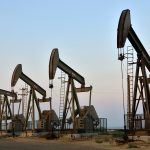Dublin, March 06, 2020 (GLOBE NEWSWIRE) — The “Onshore Oil & Gas Pipeline Market – Growth, Trends, and Forecast (2020 – 2025)” report has been added to ResearchAndMarkets.com’s offering.
The global onshore oil and gas pipeline market is expected to register a CAGR of more than 5.7% during the forecast period of 2020-2025.
According to International Energy Agency (IEA), demand for oil is expected to rise by around 1 million barrels per day (bpd) on average every year till 2025, from 97 million bpd in 2018.
In a bid to meet the rising consumption of oil and gas, the pipeline capacities are being expanded and new pipeline projects are being commissioned. However, the global shift towards renewable sources for electricity generation poses as a huge threat for the oil and gas demand, which is likely to be a major challenge for the growth of onshore oil & gas pipelines installation in the coming years.
The onshore oil and gas pipeline market is fragmented. Some of the key players in this market include Tenaris, Essar Group, Jindal SAW, Europipe, and TMK Group.
Key Highlights
- The availability of abundant natural gas reserves, the lower cost in comparison to other fossil fuel types, among others, is expected to supplement the demand for natural gas from multiple end-use sectors, including power generation, during the forecast period. This, in turn, is expected to boost the onshore gas pipeline market in the coming years.
- Russia and Pakistan have agreed to build a new gas carrying pipeline worth USD 2 billion. Further, India and Russia have also signed a deal worth USD 40 billion on natural gas exports to India. Russia being a significant exporter is paving the way for pipeline industry to grow more and also presents an opportunity for the market players during the forecast period.
- Growing oil & gas demand in Asia-Pacific holds immense potential for the onshore oil & gas pipeline market and is the fastest growing market. China and India have been largest consumers of oil & gas in the Asia-Pacific region, and pipeline network is growing at a significant pace in both of these countries.
Major Market Trends
Natural Gas Pipeline to Dominate the Market
- The global demand for natural gas is expected to increase by 1.6%, y-o-y, for the next five years, with consumption reaching almost 4,250 billion cubic meter (bcm) by 2025, up from 3,850 bcm in 2018. Therefore, the natural gas pipeline network is expected to grow in parallel to the increase in natural gas demand.
- By 2030, owing to factors, such as environmental benefits and quest for energy security in regions, such as Asia-Pacific, the consumption of natural gas is expected to witness the fastest growth among all fuel types, which, in turn, is expected to drive the onshore pipeline market.
- With exports of 104.8 billion cubic meters in 2018, Qatar continued to be the largest LNG exporter, a position it has now held for over a decade. The LNG trade is expected to witness a significant increase across the globe, resulting in increased demand for natural gas onshore pipeline network as well.
- Therefore, focus on cleaner fuel, technology developments making it possible for coal-bed methane cost-efficient farming has been among the driving factor in demand for the onshore pipeline infrastructure.
Asia-Pacific to Expect a Significant Growth in the Forecast Period
- The energy consumption in Asia-Pacific is expected to grow by 48% over the next three decades. This has led the onshore oil & gas pipeline market to be the fastest growing amongst other regions.
- With China’s five-year plans for the period of 2016 – 2020, the government’s plans to increase the proportion of natural gas in the energy consumption mix to about 10% by 2020, from about 5.9% as estimated in the year 2015, through enhanced domestic exploration and production activities.
- China is expected to strengthen its gas pipeline network, to boost the clean fuel’s share in the country’s energy mix, during the forecast period. As per the National Development and Reform Commission of China, the country’s oil & gas pipeline network is expected to reach 240,000 km by 2025, with natural gas pipelines reaching 123,000 kilometers.
- India is also modifying its gas pipeline infrastructure to meet the growing demand. According to Petroleum and Gas Regulatory Board (PNGRB), the natural gas pipeline infrastructure is expected to grow to about 28000 kms, in length during the forecast years.
- Therefore, the increasing demand and new pipeline infrastructure in Asia-Pacific are some of the major factors that are driving the onshore oil and gas pipeline market growth.





